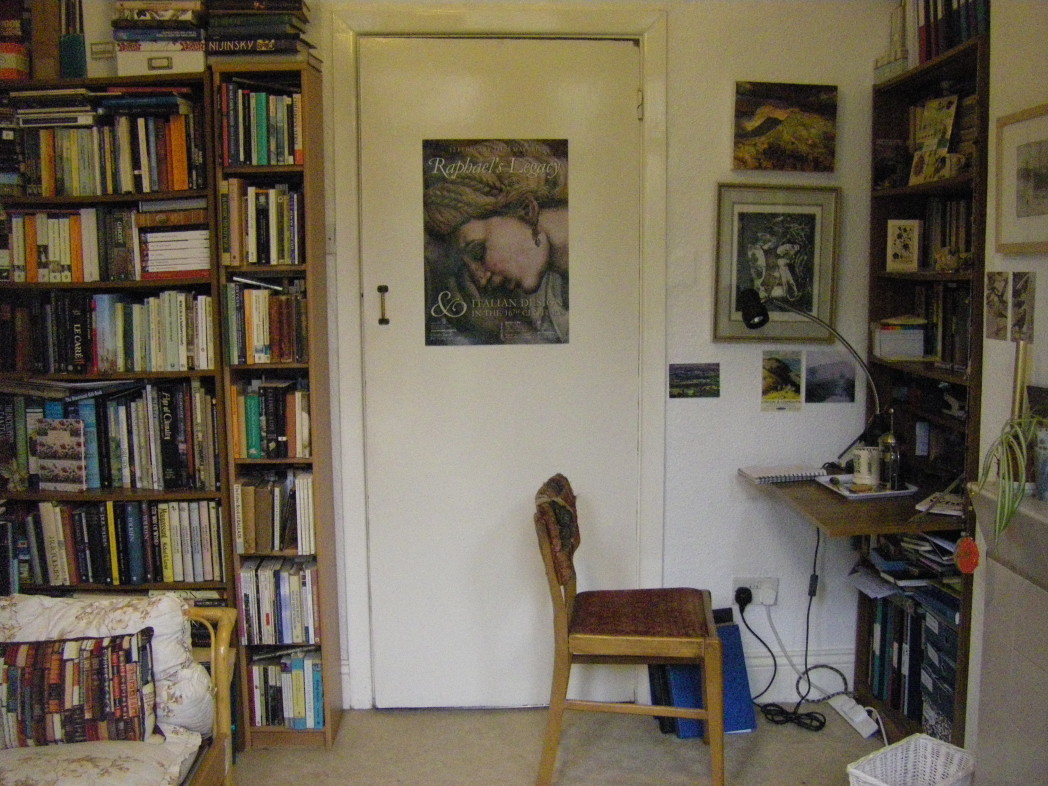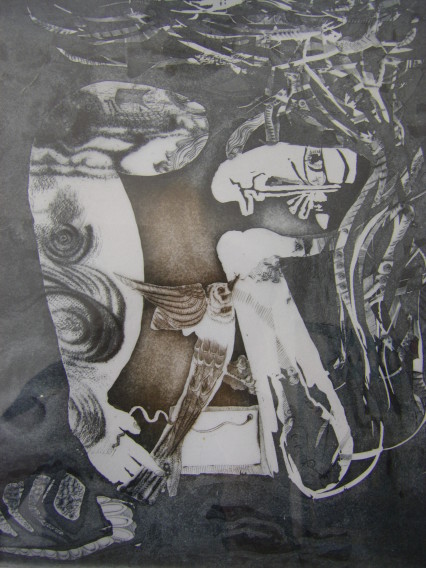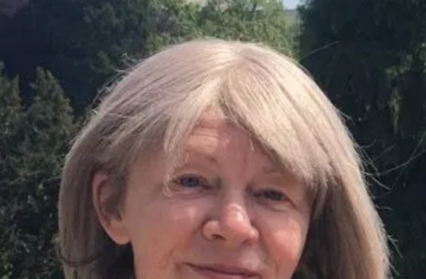In the latest of our Writers’ Rooms series we take a peek at the work space of poet and best-selling children’s author Catherine Fisher. The Oracle (2003) was shortlisted for the Whitbread Children’s Book Prize, and Incarceron (2010) was The Times Children’s Book of the Year and a New York Times Bestseller. Writer of over 30 books, Fisher can certainly lay claim to being one of Wales’ most successful and widely loved writers.

The room I usually write in is a sunny space at the back of the house, with a door onto the garden.
The room is called the playroom, because that’s what it used to be when my sister and I were small, and in some ways is what it still is. Writing is work, but also play. So I’ve never stopped playing in here.
It’s also the room where most of the books are kept, stacked up or falling off shelves. These are distractions, of course, because when a story or poem is stuck they get pulled out and browsed and mulled over, and that can be useful, in setting the imagination off on a tangent, or can be just a pleasant waste of time. Books – other people’s work – catch the eye, they attract or repel, they make you feel irritated or welcome you in. They are also a constant challenge.
There are lots of pictures in the room, but the one to the side of my desk I find particularly interesting. It’s an etching by a Frenchwoman called Liliane Schaefer-Minerbe, and I saw it on a stall in Jacob’s Market in Cardiff one time. It attracted me across the room. When I got closer I saw the subject was Branwen and her starling, and was immediately even more fascinated.

It is such an intricate and accomplished work, with the ships of Matholwch sailing through the strands of Branwen’s hair.
I looked up the artist and found she had lived in Wales for a time in the 1970s and exhibited here, so presumably the piece is from that time.
The desk and bookshelves were bought from Woolworths back in the seventies too, and the chair is an old dining chair with the padding now held on with tape, as I’ve never got round to having it repaired. The chair doesn’t really fit the desk, but I’ve got used to it.
I used to have all the editions of my books on the shelves in front of me, but now I’ve moved most of them out to another place. Maybe they have become a little accusatory, a reminder of time passing. So now it’s as if I haven’t written anything at all, which is quite liberating.
There is music in the room – an old turntable and a CD player. I like to have something on that suits the mood of whatever I’m writing, but not poetry, as that has to be done in silence.
The good thing about the room is the door to the outside. In summer I can write with it open and hear the birds singing; robin and blackbird and the urgent chirping of sparrows, which come right up to the threshold for crumbs.
Though there are two cats which live in the room too, and on rainy days they sit staring out through the glass, and the birds stay away.
I tend to work in the room in the mornings, when it gets the sun. Because it’s at the back of the house I can’t get an internet signal here, so that makes it a good place to work uninterrupted, and often I don’t even bring the laptop in, but write by hand. I have a ridiculously large collection of pens and notebooks, and enjoy the physical satisfaction of using nibs on good paper. I also find it an easier and quicker way to work.
I am a very expert day-dreamer and doodler.
The room doesn’t really look like a working place. It has a small sofa, and with the books and music a visitor would maybe not even know it was an office. Even the desk is behind the door, and when the door is open it’s hidden.
I quite like that.
Catherine Fisher’s latest novel, the final instalment in the Chronoptika Quartet, The Speed of Darkness is out now from Hodder’s Children’s Books.
Catherine Fisher’s Writers’ Room piece is a part of a Wales Arts Review series.












